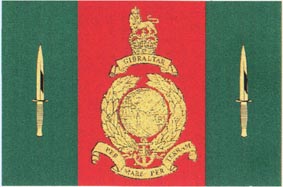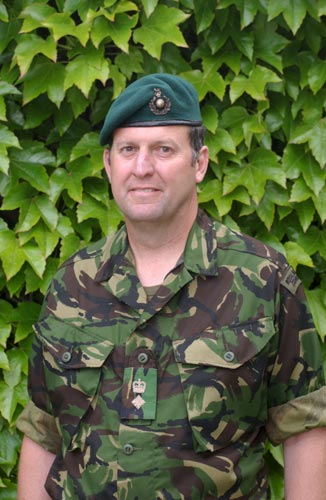Commando Training Center RM
 Commando Training Centre Royal Marines
Commando Training Centre Royal Marines
The role of the Commando Training Centre Royal Marines is to train regular and reserve new entry personnel for service within units of 3 Commando Brigade and other operational units within the Royal Marines Command, as well as to support the structure of the Corps by providing an extensive package of continuation courses which enhance infantry and Commando skills.
The Structure of Lympstone
The Commando Training Centre is administered by a structured organisation of 3 training wings which are supported by the TSD and, focus on training policy whilst the Corps Colonel ensures that standards of Recruit and Officer selection are maintained. In addition the command element must adopt cost effective budget policies and procedures.
The 3 training wings cover the areas of recruit training, officer training, infantry support training, command courses for NCOs and specialist training for signallers and clerks. These comprehensive courses are fundamental to maintaining the continuity of standards within the Royal Marines.
Each of the 3 wings is commanded by a Lieutenant Colonel who is responsible, through Director of Training, to the Commandant. The Commandant is the budget holder and directly responsible for the allocation of departmental funding to the Training Wings to meet the annual training targets delegated to Lympstone.
The Commandant is assisted in his management by a deputy, who as well as being the second-in-command is the legal 'Commanding Officer', responsible for such matters as the day to day administration of the base, discipline of troops and the security of the complex and outside training areas used by the Training Wings.
All Royal Marines return to Lympstone many times as they progress through their career. From the Potential Royal Marine Course (PRMC) to Regimental Sergeant Major (RSM), from Potential Officers Courses (POC) to Commandant they will return to Lympstone. Equally they will attend specialist qualification courses at CTCRM to improve their military skills.
Facilities at Lympstone are wide ranging. They include, a first class gymnasium complex and swimming pool for combat swimming tests, an indoor range simulator incorporating the latest laser technology, a nearby 300 metre rifle range to assist Recruits in their shooting skills and on site training areas within the 95 acre base. In addition CTCRM has access to 2,500 acres of nearby Woodbury Common, as well as the training areas of Dartmoor and others in Wales and Scotland.
The combination of management and infrastructure oversees the training of, on average, 1,200 recruits per year, as well as 2,000 potential recruits who will attend acquaint courses and 400 potential officers. In addition the Training Wings run upwards of 320 courses a year for a further 2,000 students.
Training Support Department
The Training Support Department (TSD) is responsible for ensuring that all training at CTCRM effectively prepares personnel for their jobs in the Corps. Additionally TSD continually monitors, evaluates and influences the extent to which training objectives are reached in relation to the expenditure of resources.
TSD is commanded by a Lieutenant Colonel and is organised into three departments; Training Management, Education and Staff Training and Training Resources. The primary responsibility of the TSD is to oversee the management of training, ensuring a standardisation of policy throughout the Centre.
The Training Management Department coordinates the training schedules for all Wings, evaluates and maintains the quality of training and designs the training for new courses or alterations to existing courses.
The Education Department runs educational and current affairs training for Recruits and Young Officers. It also runs a range of personal development courses for trained ranks such as; GCSEs, administering NVQs resettlement courses and computer based Interactive Learning.
The Training Resources Department provides graphics support to all Wings for the benefit of Staff and trainees. The department has a training aids library, photographic section, reprographics section and illustrators. It is also responsible for managing and allocating to other units the Woodbury Common Training Area (WCTA) and Straight Point Ranges.
COMMANDING OFFICER
 Lieutenant Colonel Phil Sampson
Lieutenant Colonel Phil Sampson
Lieutenant Colonel Phil Sampson joined the Royal Marines from Nairobi, Kenya in 1978. After training he served as a troop commander in 40 Commando in Northern Ireland. He took two recruit troops through recruit training before qualifying as a Physical training and Sports Officer. He has served as an Intelligence Officer and Adjutant in 42 Commando in both Norway and Northern Ireland and commanded Head Quarters and Charlie Companies in 40 Commando. He has also been responsible for Royal Marine non-commissioned manpower as the Corps Drafting Officer. His recent experience has been in counter terrorism where he served in intelligence. As a local to Exmouth he has served at the Commando Training Centre previously as the Officer Commanding All Arms Commando Course, a Young Officer Instructor and as the Commandant’s staff officer. During his time in the Royal Marines he has served in Australia, Norway, Northern Ireland, Egypt, Israel, Bahrain, Spain, Italy, Germany, Switzerland, Belgium, Kenya, Kuwait and the United States. He attended Staff College at Camberley in 1991.
Lieutenant Colonel Sampson is married to Debbie who runs her own catering company and they have two sons Matthew at university and David at Colyton Grammar School. Lieutenant Colonel Sampson’s interests are sporting, mainly now in an armchair capacity.
all content on Royal Marines Pages courtesy of the Royal Marines and the MOD